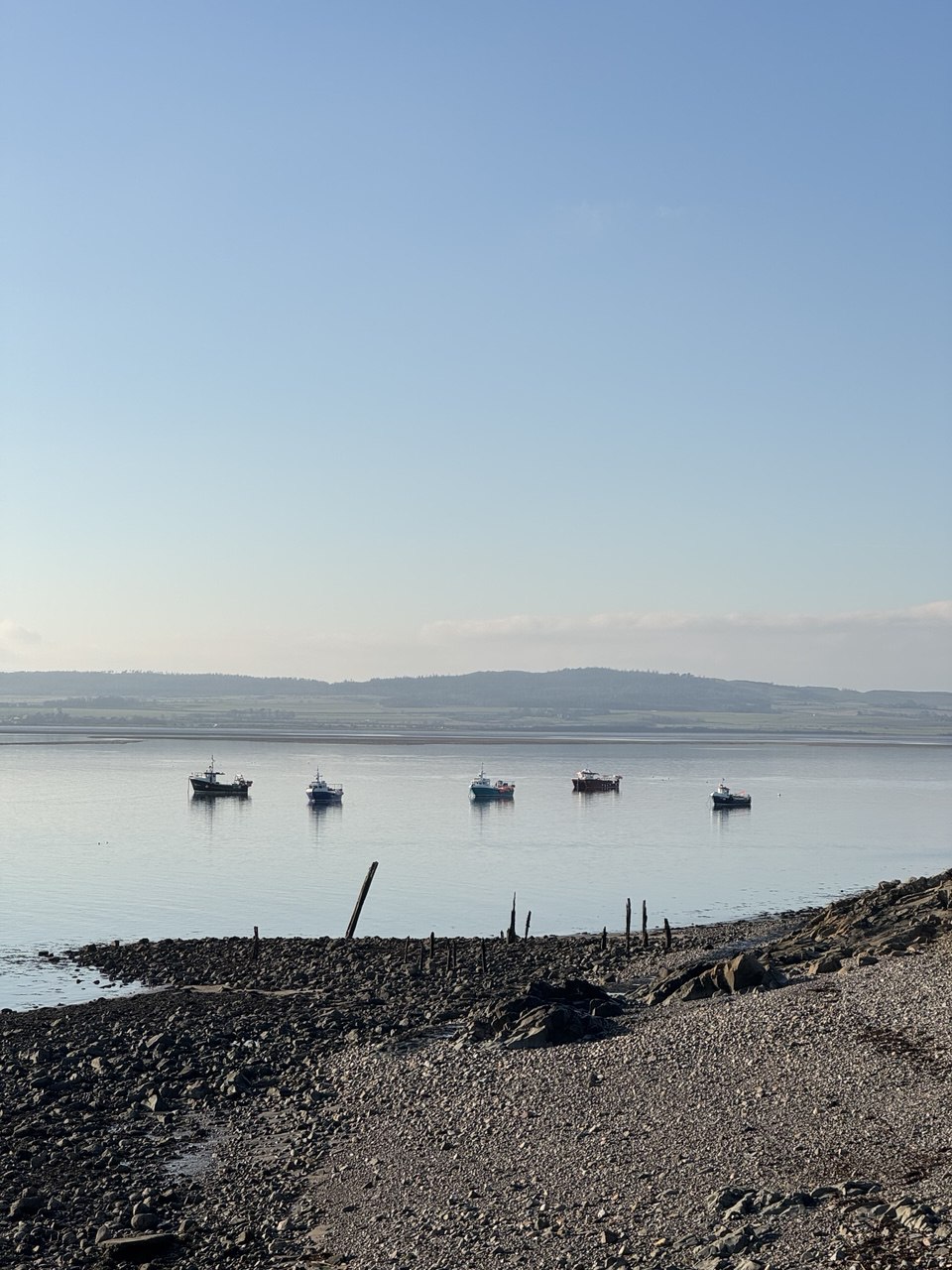|
Your weekly crème de la crème of the Internet is here!
03.10.2023 (read in browser)
This is the free monthly edition of the newsletter. If you want to receive every weekly edition, plus access to the full archive of both free and paid newsletters, subscribe here.
In case you missed it, the last three paid editions included:
-
#165 on first Autumn dishes, where I share my knife collection, pronounce (or not) "h" in "herb", and read Magnus Nilsson's magnum opus.
-
#166 on unusual pairings, where I plate Irish oysters with Scottish apples, join a goodbye to iPhones Mini, and learn why chess isn't popular in Japan.
-
#167 on learning from chefs, where I replicate a dish from one restaurant, question the future of AirBnB, and explore etymology of being in limelight.
Don't miss out on future newsletters – upgrade now to get access to all of them.
On seasonal desserts
It's one thing to cook seasonal mains and starters, and a completely different one to make sweet things, mainly because the variety of flavours among classic recipes boils down to seasonal fruits and sweet or sour accents.
Some things are noticeably autumnal though, like hazelnuts, so I took on a path of making a dessert featuring them in all ways possible (and heavily inspired by Cedric Grolet's books). To start, hazelnuts are caramelized in a glucose and sugar syrup:
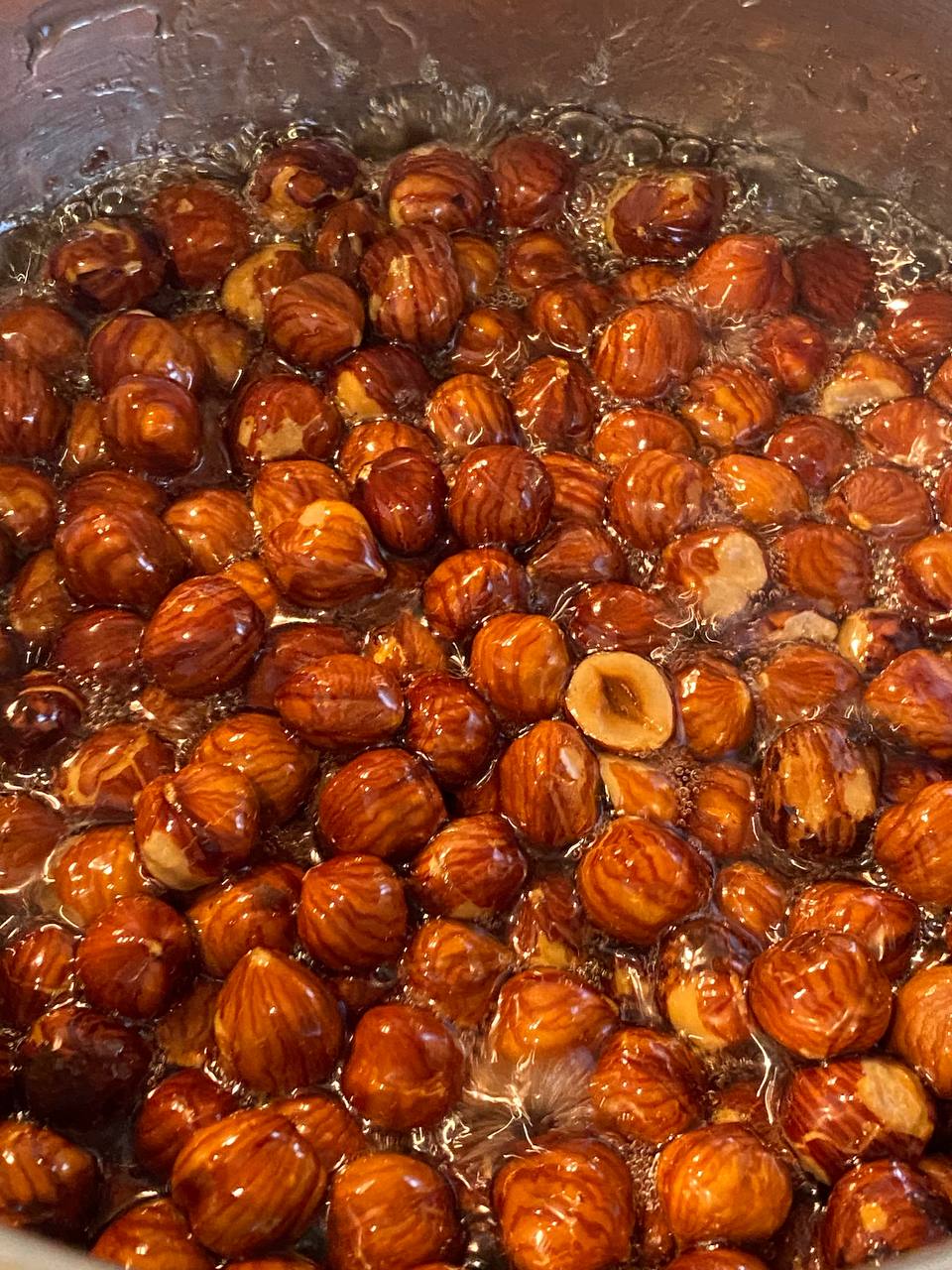
The nuts are then ground into a praline, and separately a vanilla caramel is made:
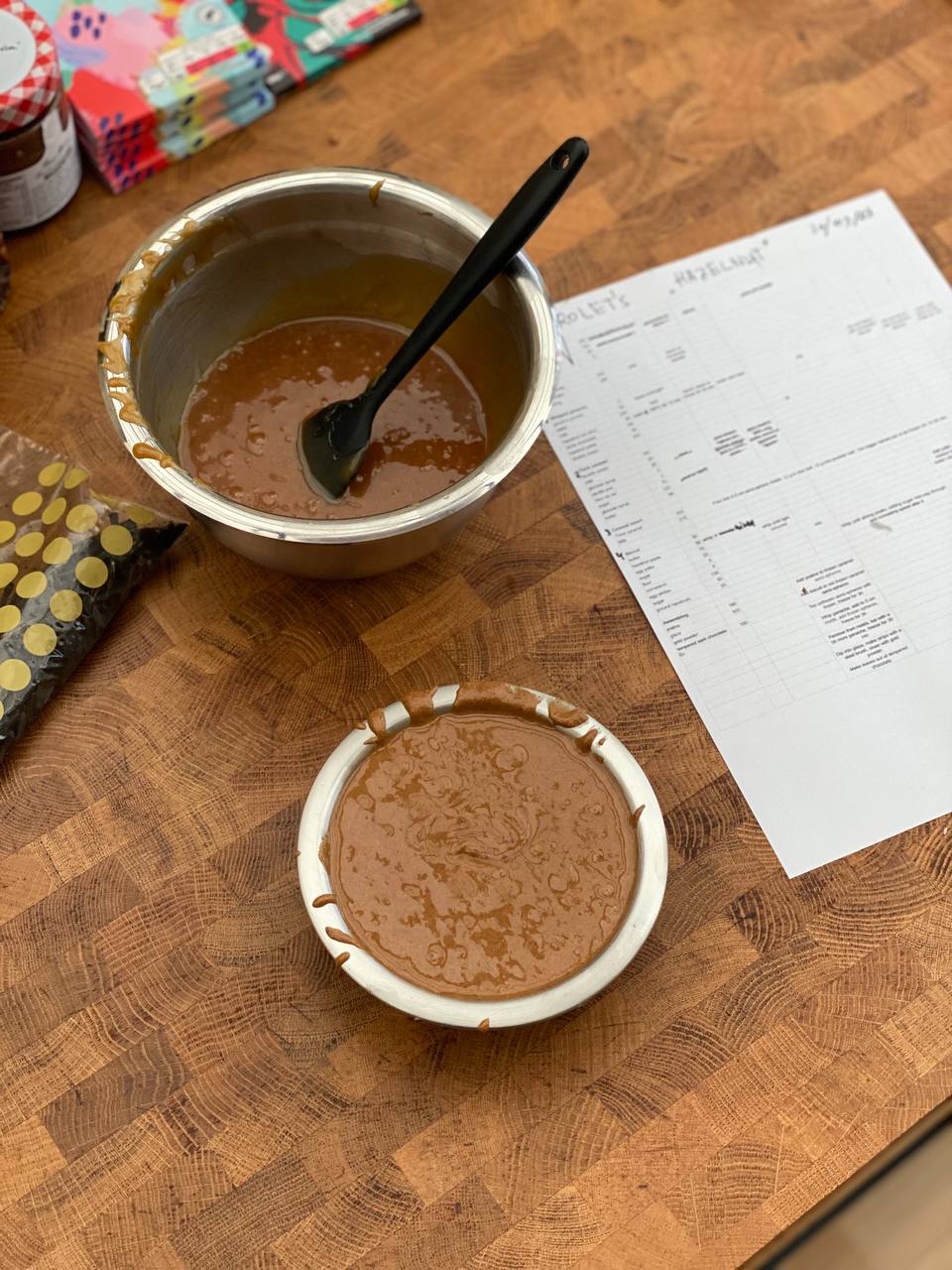
I also infuse milk with roasted hazelnuts and make a ganache out of it:

Another layer is made with biscuit and ground hazelnuts:

I layer caramel, praline, biscuits, and more caramel into sphere molds:

The spheres are frozen overnight:
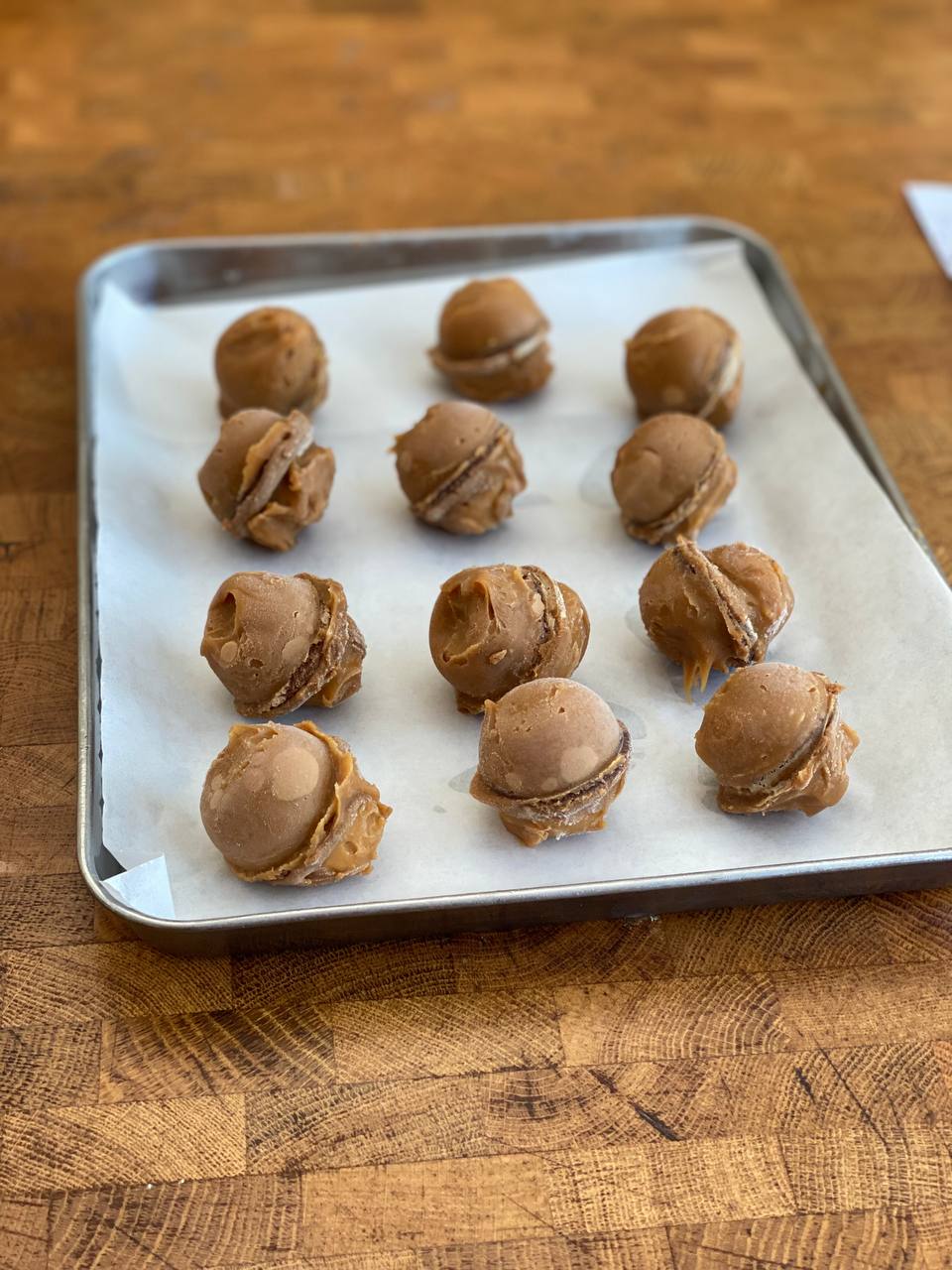
Then they're dipped into ganache, and are frozen again:

The resulting (bigger) spheres are demolded again, dipped into cocoa butter and 70% chocolate sauce:
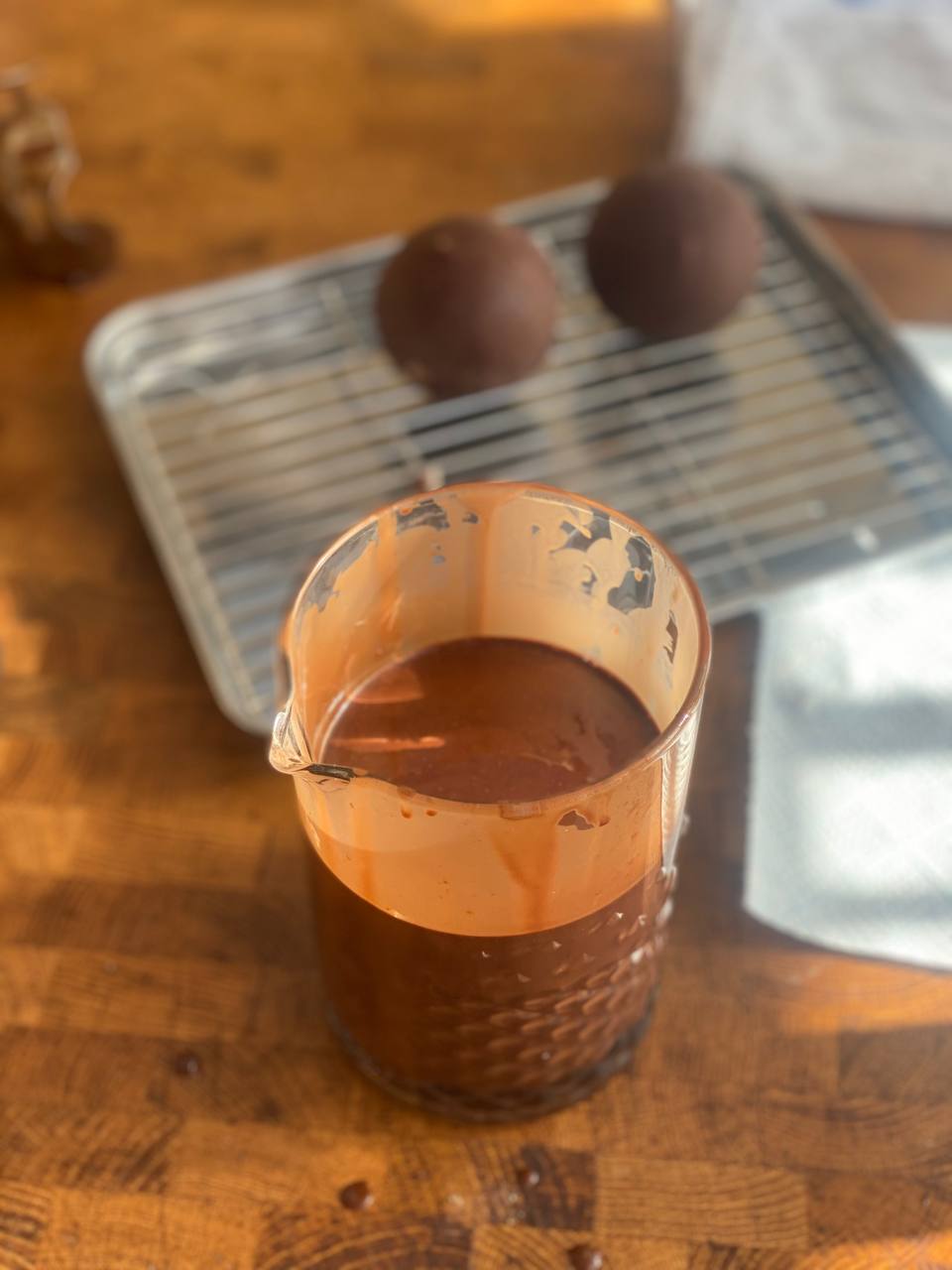
Finally, each sphere is scratched to make thin lines reminscent of those on a hazelnut:
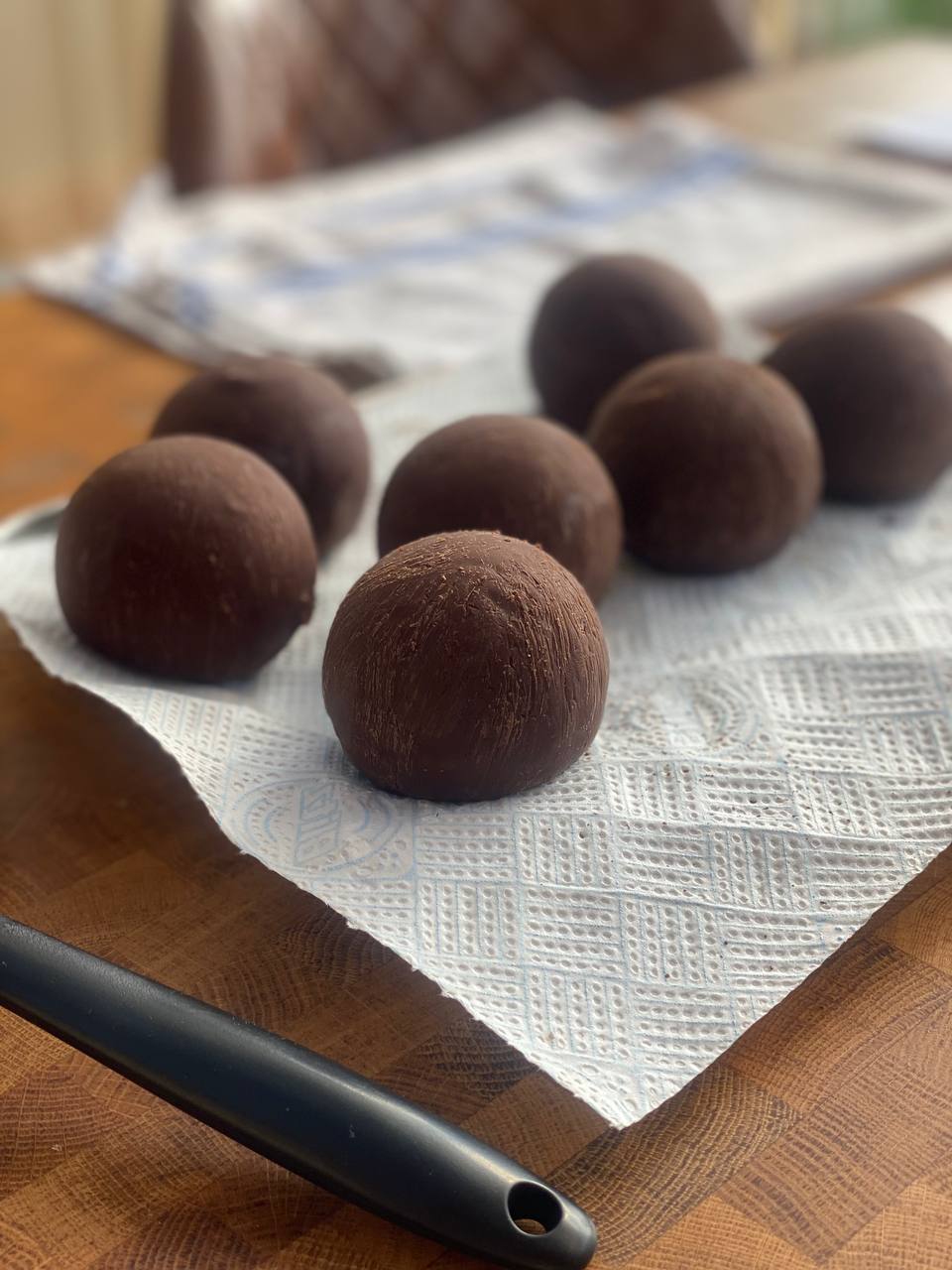
The dessert is still not finished: I need to paint parts of it in gold (who'd have thought edible gold powder is so hard to find in local stores?!) and then make some thin tempered chocolate leaves, so bear with me for the next edition of the newsletter to see the final results and how it looks slices (also follow me on Instagram for live updates).
Things I enjoyed reading
There is a wonderful tradition of throwing buns, which is still celebrated in a UK town. Here is a way more detailed report:
So when can the people of Abingdon expect a Bun Throwing? It is not an annual occurrence. The Town Council decides whether to mark a particular occasion with buns. There is a perception that these are always royal events, and most of them are: coronations, weddings, birthdays and jubilees. However, even in the early days of the custom, there was a celebration with buns to mark the end of the Crimean War. The non-royal celebrations became more frequent in the 20th century. For example, the first anniversary of VE Day, Abingdon International Week in 1966, the twinning with Lucca in 1972 and the Millennium were all marked with a Bun Throwing.
It's happened three times in the past five years, and judging by the statistics our next best chances to visit one are during some anniversary.
Who'd have thought that people would cheat in virtual cycling (despite the name, people cycle in real world but their virtual avatars compete), and yet this is a pretty much detective story about figuring out how and why.
Pollastri is a self-described data freak, so on the heels of his team’s loss that day in February 2022, he called up the stats of his competitors. He wanted to see what they’d done differently.
Right away, he realized a discrepancy. The power recording on Zwift, determined by dividing a rider’s wattage output by their self-reported weight, was way higher than it was on Strava, another cycling app that tracks rides simultaneously.
He was taken aback. It couldn’t be cheating. Could it?
I've never been a big fan of cardio exercises, so don't really see much appeal in it, but I'd love to see a platform for weightlifters doing the same (cheating would be even easier though).
I don't really understand people who go for high street tour sellers or buy tickets to hotels on random websites (besides, probably the two-three famous ones, like Booking). Seems like that's for a reason:
The trouble continued when he arrived with his dog for his three-night stay. There was no record of the reservation. The manager told him they only do direct bookings and told him it was a fraudulent listing.
A Booking.com spokeswoman says the listing was legitimate. She says the cabin operator isn’t taking reservations on the site “as we work to ensure this partner receives the training they need to be successful and provide a good experience for guests.” She added that the company’s customer-service team is available 24 hours a day.
At least there are credit cards and chargebacks for some additional piece of mind, and then optional insurances and so on, but over the last years I started to think that saving a fraction of your trip's costs is not worth it given the potential amount of stress if something goes wrong.
This is mostly worth of your attention due to hilariously unsafe pictures of baby car seats, but also some history behind the way various laws were meant to push for more reliable solutions:
Seat belts for adults were not standard equipment in automobiles until the 1960s. Child safety seats first became available in the late 1960s, but few parents used them.
By the 1970s, regulatory bodies and organizations began to address child safety concerns in earnest. Yet, the designs of these early child car seats were far from the sophisticated models we know today.
At least parents were asked to wear seat belts, not something else.
I couldn't pick a single fact out of this overview, so had to share it in full, but bear with me:
Think of it this way: anyone can write Super Fino in a couple of seconds. There are only 18 Master Weavers who could actually weave one, and it would take months to do it. It is much easier to write a high quality hat than to weave one. And cheaper. Comparing descriptions, or comparing words, is not at all the same as comparing the actual hats. The only truly reliable way to compare the quality of two hats is to examine them side by side.
As the result, this is the only hat I know a lot about. Might as well get myself one now.
Living in Scotland makes me think about my shoes way more than I am used to, and as the result most of my time is spent reading about various hiking footwear (and not trying any). This is my latest argument for just keeping wearing whatever sneakers I already have.
“They say a pound on your feet is worth three on your back,” Hester said. “And these are way more comfortable and lighter.”
Many trekkers are following Hester’s lead with their footwear, leaving their more conventional hiking boots at home in favor of featherweight running sneakers. Outdoor retailer REI Co-op said sales of trail-running shoes have increased by 11% over the past five years.
I don't have any trail-running shoes though, so might as well look into it.
I really enjoyed the whole series here, and now do think of repeating the steps myself, especially given that I already have a working iPhone 3GS lying around.
One aspect of the jailbreak scene that always seemed like black magic to me, though, was the process of jailbreaking itself. The prospect is pretty remarkable: take any off-the-shelf iPhone, then enact obscene rituals and recite eldritch incantations until the shackles drop away. The OS will now allow you to run any code you point at it, irrespective of whether the code has gone through Apple’s blessed signing process, paving the way for industrious tweak developers like myself.
Surprisingly, the older I get the more I am fascinated with lower level things, and with understanding how those things work. I guess once you get better at something, you just strive to find the next more complex thing to learn about.
I am not really surprised that people try to gamify everything, but I never thought they'd manage to do this with sleep, and then turn it into multiplayer games:
“He has become very competitive and has made incredibly detailed spreadsheets that track every single aspect of the game,” Chevill says. “Despite that, his sleep scores are still neck and neck with mine throughout the week, which I find quite funny.”
High-achieving sleepers playing over a few nights might see a “shiny” Pokémon appear on their app—a rare treat with no tangible in-game value besides bragging rights.
It seems less harmless than walking with your phone into busy traffic when playing the normal Pokémon game, so I can't really blame them.
It must have taken lots of guts to insist on separation in unhappy marriage for a woman in the 18th century, but it must've been even harder to then exchange life in central London for work in St. Petersburg, and that where the story only starts:
Hers is a vivid portrait of life on the periphery of a courtly elite adapting to western fashions: French gowns, twice-weekly Italian operas, the occasional Dutch play. Justice didn’t care for the latter: “I think nobody would choose to see them twice,” she sniffs. But Russian life and customs continued, and she has a sharp eye for food and drink, housing and heating, rites and rituals. And, of course, the cold: “The men’s beards look as if they were set with diamonds, by the icicles hanging about them,” she writes of a winter scene. “The green trees are become so white, that they put me in mind of the rosemary upon cakes at twelfth-tide.”
The story also touches briefly on her husband, who was so in love with books he was stealing them from libraries.
I can't say this week was rich on long posts, so here is one to wrap it up: a full-blown research proving that sloths of two very different varieties have very similar hair:
Although the hairs from Bradipus spp and Choloeps spp exhibit unusual morphology, the results obtained using both laboratory-based and synchrotron-sourced Fourier transform infrared (FTIR) spectrometry indicated that the keratin composition of their hairs did not differ greatly from each other or from that found in other mammals.
And even though I didn't read it in full, the amount of effort put into it makes me more optimistic about the future of independent science than I was before.
Things I didn't know last Tuesday
Here comes a cake made from unripen apples if you ever wondered what to do with some:
A codling is almost an apple, like a boy is almost a man. The Oxford English Dictionary records both the literal and metaphorical definitions of “codling” — “Originally: an immature or unripe apple; a type of hard apple suitable only for cooking” in medieval and Renaissance usage, and, later, in Shakespeare’s lifetime, “figurative. With implication of immaturity or inexperience: a young man, a youth. Obsolete.”
This is also a reference to Shakespeare’s Twelfth Night.
This is just a beautiful mathematical riddle but give it a read:
The Wikipedia article on “Irish logarithm” presents this rather weird little algorithm, invented by Percy Ludgate. [...] Normally you would just look it up on a multiplication table, but please bear with me for a bit.
Why is it called "Irish"? The inventor was an Irish amateur scientist.
Last time I learnt Americans spent decades without black currants, and now I learn they also don't have mutton:
By the end of World War II, mutton had come to symbolize everything that Americans wanted to leave behind. Men returned from the war swearing they’d never eat another bite of mutton after stomaching tinned army rations that included the notoriously unappetizing “Mutton Stew with Vegetables.” Women were enjoying new appliances that allowed them a modicum of freedom from household chores. Modernity and convenience were all the rage, and mutton, which requires dry aging and long, slow cooking times to become tender, was neither modern nor convenient. If mutton ever really had a heyday, by midcentury, it was over.
Probably that also explains why some people come to the UK and complain about food. Imagine eating something that looks familiar but tastes very wrong.
This is probably somewhat random, but during more than a decade of iOS development misconstructed URLs probably caused the majority of crashes in my apps (there must be something I didn't learn along the way).
// iOS 16
URL(string: "my string") -> nil
// iOS 17
URL(string: "my string") -> my%20string
It's the end of an era with this change but I have mixed feelings about something interfering with the code I write in such way, even if it's for the better.
I'd expect that in Middle ages capitals were the source of most if not all murders, but here in the UK seems like the biggest issue was Oxford:
Based on their research, Eisner and Brown estimate the homicide rate in late medieval Oxford to work out around 60-75 per 100,000. This is some 50 times higher than current rates in 21st century English cities. The mix of young male students and booze was often a powder keg for violence.
It's also quite cool how much information we have about those times to be able to reconstruct such detailed maps.
The post itself is mostly complaints about US food, but it shares some interesting statistics on how much time people in various places spend eating and drinking. In France, for example, it's more than 2h a day, while in the UK it's almost twice less.
If you’ve lived outside of the US you don’t need data to tell you Americans eat quickly, and mechanically. We gulp our food down like starving beasts intent on moving onto the next thing, while everyone else takes their time, savoring the experience.
In Korea, tables rarely turn over. If I don’t get to my favorite Izakaya in Seoul by 6:30, I miss getting in, since groups will sit from six till closing, eating small dish after small dish, laughing, drinking, and generally being social.
I guess it'd help to know how much time out of it is spent drinking though, as it might change a few things as well, but overall I do agree that you can't expect someone to be passionate about food when they rush their dinners.
As a non-native speaker, certain parts of the language never cease to amaze me, especially when it comes to such subtle differences:
Several came into English in the 1400s, but didn't develop its quantity meanings until the 1500s. (Several initially meant "distinct or separate" in English.) Yes, meanings: several originally referred to more than one.
It's also quite fun to question native speakers on those topics: they rarely can explain the difference, but in attempts to define them learn a bit more about their own language.
I mention the vagus nerve recently, trying to explain what I've been working on for the past three years, but if you're not yet convinced how cool that is, here is a fresh research on a related topic:
The vagal nerve connects the brain to the heart, and other internal organs including the gut, regulating the 'rest and digest' parasympathetic nervous system responses.
The new research finds the parasympathetic and sympathetic nervous systems work together in exercise to help the heart pump harder and faster.
The researchers also investigated the role of mediators released by the cardiac vagal nerve.
It's also quite cool to see how this branch of science becomes more mainstream.
I wasn't sure how to fit my food safety concerns into the title but I am not sure if storing your pickles for more than half a century is a sound idea:
“It was most likely around 20 years old by the time I was given it, making the 150 grammes [5.3oz] that remain today over 70 years old,” Jayalakshmi said.
The pickle is completely black, as aged lemon pickles tend to become, and was made by simply sun-drying salted sliced lemons.
At least it explains why people in India don't like those who buy pickles in shops.
While our parents were afraid that the younger generation could get addicted to cheap drugs and booze, the even younger generation surprised everyone and got hooked on... bubble tea:
Our findings highlighted that milk tea consumption might lead to addiction, and it is associated with depression, anxiety, and suicidal ideation. Current findings can assist policymakers in developing regulations such as restricting advertising, providing psycho-education, establishing food hygiene standards for such a prosperous youth-dominant consumption industry while protecting their mental health.
How much is too much you might ask? Judging by the paper, it's more than 6 cups per year.
Book of the week
I rarely read not in English, and when I do it's more often than not some kind of mainstream fiction, either relatively old, or exceptionally modern.
Viktor Pelevin has been publishing a book every year for the past decade and I didn't miss one, as most of them are very bold and satiric overviews of world events of the year before. Journey to Eleusis is his latest book, and it's indeed exceptionally modern, given that the plot is revolving around language Large Language Models and transhumanism.
The book is not translated into English (yet?) but here is my very liberal translation:
"If you've read 'Crime and Punishment,'" the fish began, "you'll remember that the hero has two tasks - to cleanse the blood and to make humanity happy. But it's not about this duality per se. The same problematic is characteristic of many other European cultures. The complexity here is that in our case, it's the reverse duality."
"Meaning?"
"The Russian soul first wants to do the second, and only then the first."
"Ah," I said. - "Yes. The main feature of our psyche is a complex maximalism. The Russian soul proclaims that it will first lead everyone to unattainable peaks of happiness and only then wash away the blood and absolve everything."
I still have to finish the story, but so far I do enjoy it way more than the previous few books. That's also one of the few things that always gets me excited for Autumn (the guy never misses his deadlines).
See you in a week!
Thank you for your support and subscribing to the weekly edition.
If you have any questions, or want to suggest a link for the next newsletter, please drop me a message on Twitter or reply to this email.
Cheers! 🍸
|









